The Asian water monitor is also called Malayan water monitor, common water monitor, two-banded monitor, rice lizard, ring lizard, plain lizard and no-mark lizard, as well as simply water monitor. The local name in Sri Lanka is kabaragoya, denoting a subspecies with distinct morphological features.[3]
Description
Walking on pavement
Distribution and habitat
Head closeup showing split tongue
Asian water monitors are semiaquatic and opportunistic; they inhabit a variety of natural habitats though predominantly this species resides in primary forests and mangrove swamps. It has been noted that these monitors are not deterred from living in areas of human disturbance. In fact, they have been known to adapt and thrive in agricultural areas as well as cities with canal systems (such as in Sri Lanka, where they are not hunted or persecuted by humans). This species does not thrive in habitats with extensive loss of natural vegetation and aquatic resources. Habitats that are considered to be most important to this species are mangrove vegetation, swamps, wetlands, and altitudes below 1000 meters.[12]
Behaviour and ecology
Water monitors robbing eggs from a nest. Illustration by Pierre Jacques Smit from Richard Lydekker's The Royal Natural History, 1893–1896
V. s. salvator with full belly at Kandy Lake, Sri Lanka. Possibly obese or gravid, maybe both.
In dominantly aquatic habitats their semiaquatic behavior is considered to provide a measure of safety from predators. Paired with their generalist diet, this is thought to contribute to their ecological plasticity.[12] When hunted by predators such as the king cobra (Ophiophagus hannah) they will climb trees using their powerful legs and claws. If this evasion is not enough to escape danger, they have also been known to jump from trees into streams for safety, a tactic similar to that of the green iguana (Iguana iguana).[10]
Like the Komodo dragon, the water monitor will often eat carrion.[13][16] They have a keen sense of smell and can smell a carcass from far away. They are known to feed on dead human bodies. While on the one hand their presence can be helpful in locating a missing person in forensic investigations, on the other hand they can inflict further injuries to the corpse, complicating ascertainment of the cause of death.[17]
The first description of the water monitor and its behaviour in English literature was made in 1681 by Robert Knox, who observed it during his long confinement in the Kingdom of Kandy: “There is a Creature here called Kobberaguion, resembling an Alligator. The biggest may be five or six feet long, speckled black and white. He lives most upon the Land, but will take the water and dive under it: hath a long blue forked tongue like a sting, which he puts forth and hisseth and gapeth, but doth not bite nor sting, tho the appearance of him would scare those that knew not what he was. He is not afraid of people, but will lie gaping and hissing at them in the way, and will scarce stir out of it. He will come and eat Carrion with the Dogs and Jackals, and will not be scared away by them, but if they come near to bark or snap at him, with his tail, which is long like a whip, he will so slash them, that they will run away and howl.”[18]
Water monitors should be handled with care since they have many sharp teeth and can give gashing bites that can sever tendons and veins, causing extensive bleeding. The bite of a large pet water monitor was described by its American owner as being worse than that of a rattlesnake.[19]
Venom

The possibility of venom in the genus Varanus is widely debated. Previously, venom was thought to be unique to Serpentes (snakes) and Heloderma (venomous lizards). The aftereffects of a Varanus bite were thought to be due to oral bacteria alone, but recent studies have shown venom glands are likely to be present in the mouths of several, if not all, of the species. The venom may be used as a defensive mechanism to fend off predators, to help digest food, to sustain oral hygiene, and possibly to help in capturing and killing prey.[20][21]
Predation

Adult water monitors have few natural predators, and are only know to be preyed on by saltwater crocodiles.[22]
Threats
Young V. s. macromaculatus. Video clip
Conservation

In Nepal, it is a protected species under the Wild Animals Protection Act of 2002. In Hong Kong, it is a protected species under Wild Animals Protection Ordinance Cap 170. In Malaysia, this species is one of the most common wild animals, with numbers comparable to the population of macaques there. Although many fall victim to humans via roadkill and animal cruelty, they still thrive in most states of Malaysia, especially in the shrubs of the east coast states such as Pahang and Terengganu. In Thailand, all monitor lizards are protected species.[27] It is still common in large urban areas in Thailand and is frequently seen in Bangkok's canals and parks. Because of this, it is currently listed as Least Concern in the IUCN Red List and in CITES Appendix 2. These classifications have been made on the basis that this species maintains a geographically wide distribution, can be found in a variety of habitats, adapts to habitats disturbed by humans, and is abundant in portions of its range despite large levels of harvesting.[1]
Loss of habitat and hunting has exterminated water monitors from most of mainland India. In other areas they survive despite being hunted, due in part to the fact that larger ones, including large females that breed large numbers of eggs, have tough skins that are not desirable.[3]
In Sri Lanka, it is protected by local people who value its predation of "crabs that would otherwise undermine the banks of rice fields".[3] It is also protected as it eats venomous snakes.[28]
Taxonomy
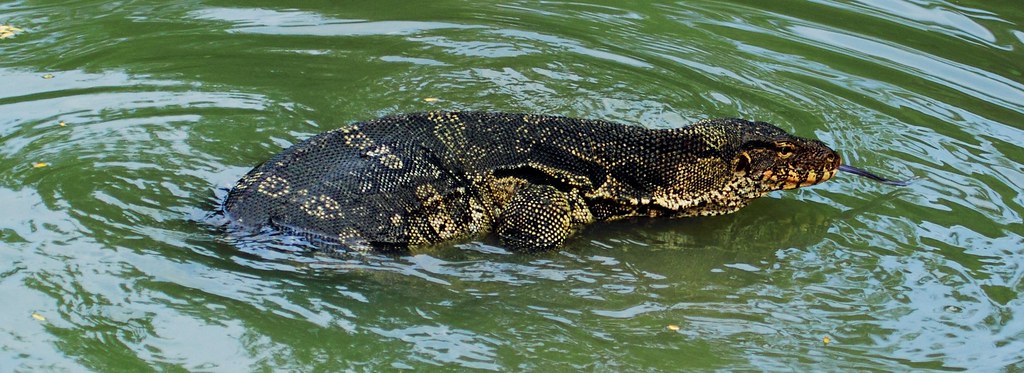
Asian water monitors fall within the kingdom: Animalia, phylum: Chorodata, class: Reptilia, order: Squamata, family: Varanidae, genus: Varanus, and species: V. salvator.[12] The family: Varanidae contains nearly 80 species of monitor lizards, all of which belong to the genus: Varanus. This genus has been proven to show the widest size range of any vertebrate genus.[29] There is a significant amount of taxonomic uncertainty within this species complex. Morphological analyses have begun to unravel this taxonomic uncertainty but molecular studies are needed to test and confirm the validity of this evidence. Research initiatives such as these are very important for changes in conservation assessments.[12]
Subspecies
V. s. salvator
- The black water monitor, V. s. komaini, from Thailand (type locality: Amphoe La-ngu, Satun Prov., Thailand, and Thai-Malaysian border area), was formerly a subspecies, but now is regarded as a junior synonym and melanistic population of V. s. macromaculatus.[2] It is known as the "black dragon" or "black water monitor" (มังกรดำ, เหี้ยดำ) in Thai[30]Melanistic V. s. macromaculatus
- The Southeast Asian water monitor, V. s. macromaculatus (type locality: Siam [Thailand]), is found in mainland Southeast Asia, Singapore, Sumatra, Borneo, and smaller associated offshore islands.[2]
- Ziegler's water monitor, V. s. ziegleri, is from Obi Island.
- Varanus cumingi, Varanus marmoratus, and Varanus nuchalis were classified as subspecies until 2007, when they were elevated to full species.[2][31]
Etymology and local names
The generic name Varanus is derived from the Arabic waral (ورل), which translates as "monitor". The specific name is the Latin word for "saviour", denoting a possible religious connotation.[13] The water monitor is occasionally confused with the crocodile monitor (V. salvadorii) because of their similar scientific names.[32]In Thailand, the local word for a water monitor, hia (เหี้ย), is used as an insulting word for bad and evil things, including bad persons. The word is also thought to bring bad luck, so some people prefer to call the animals 'silver-and-gold' (ตัวเงินตัวทอง) to avoid the jinx.[citation needed] The origin of this offensive meaning can be traced back to a time when more people lived in rural areas in close proximity to monitor lizards. Traditionally, Thai villagers lived in two-story houses; the top floor was for living, while the ground floor was designed to be a space for domestic animals such as pigs, chickens, and dogs. Water monitors entered the ground floor and eat or maim the domestic animals, also hence the other name dtua gin gai (ตัวกินไก่ ‘chicken eater’) or nong chorakae (น้องจระเข้ ‘younger brother of crocodile’, ‘little crocodile’) and even sometimes called ta kuat (ตะกวด), which in fact refers to a Bengal monitor (V. bengalensis), a different species.[33]
In Indonesian and Malay language, the Asian water monitor is called biawak air.[34]
Gallery
- With tongue extended (Sunderbans National Park, India)




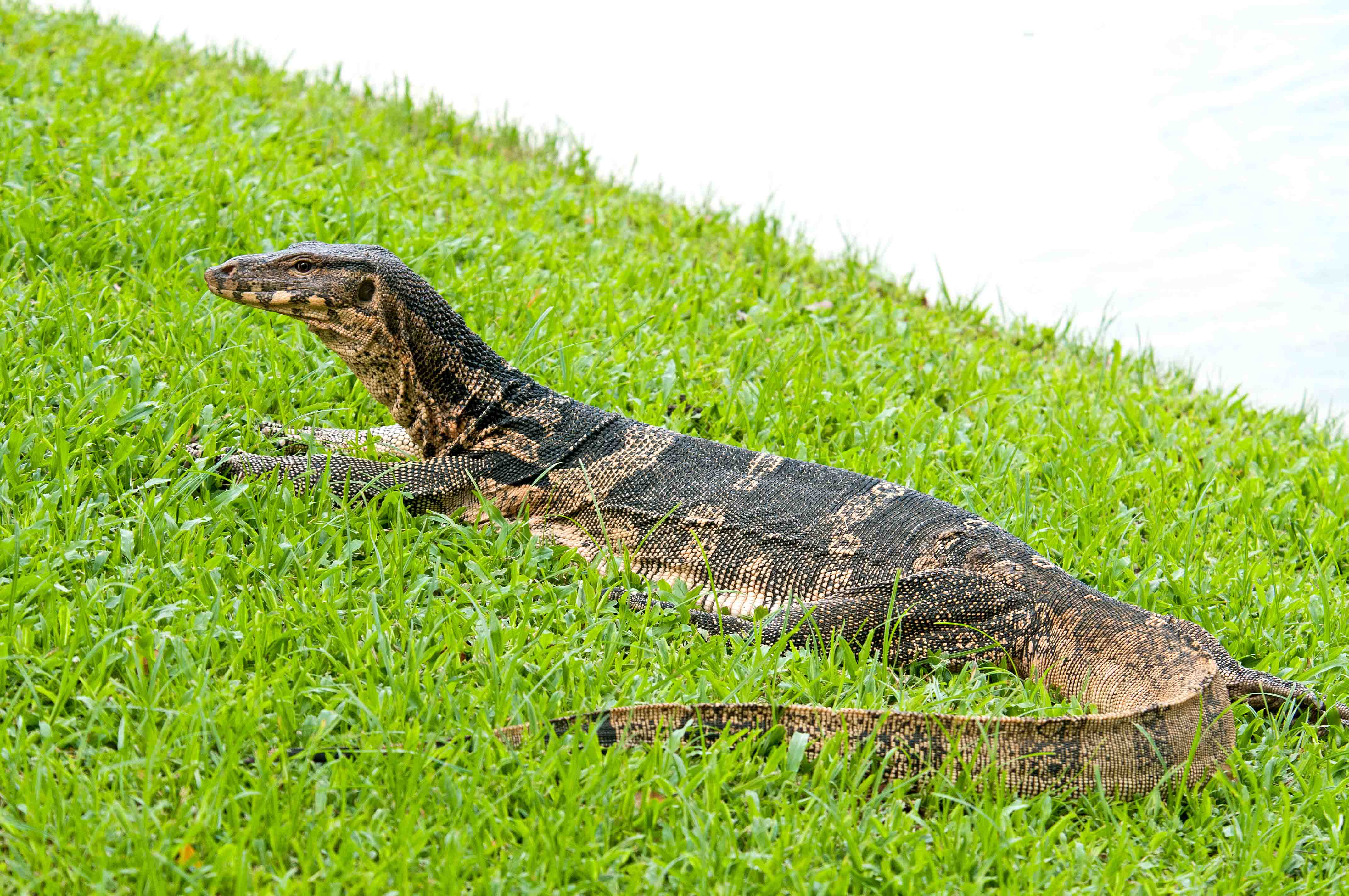

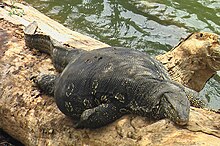
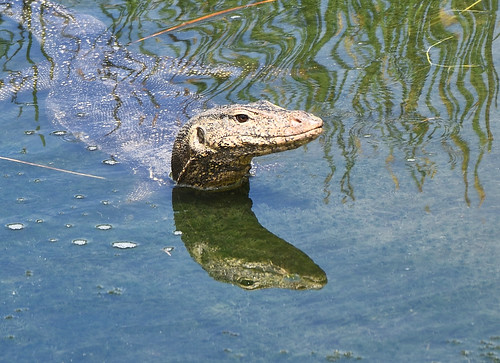




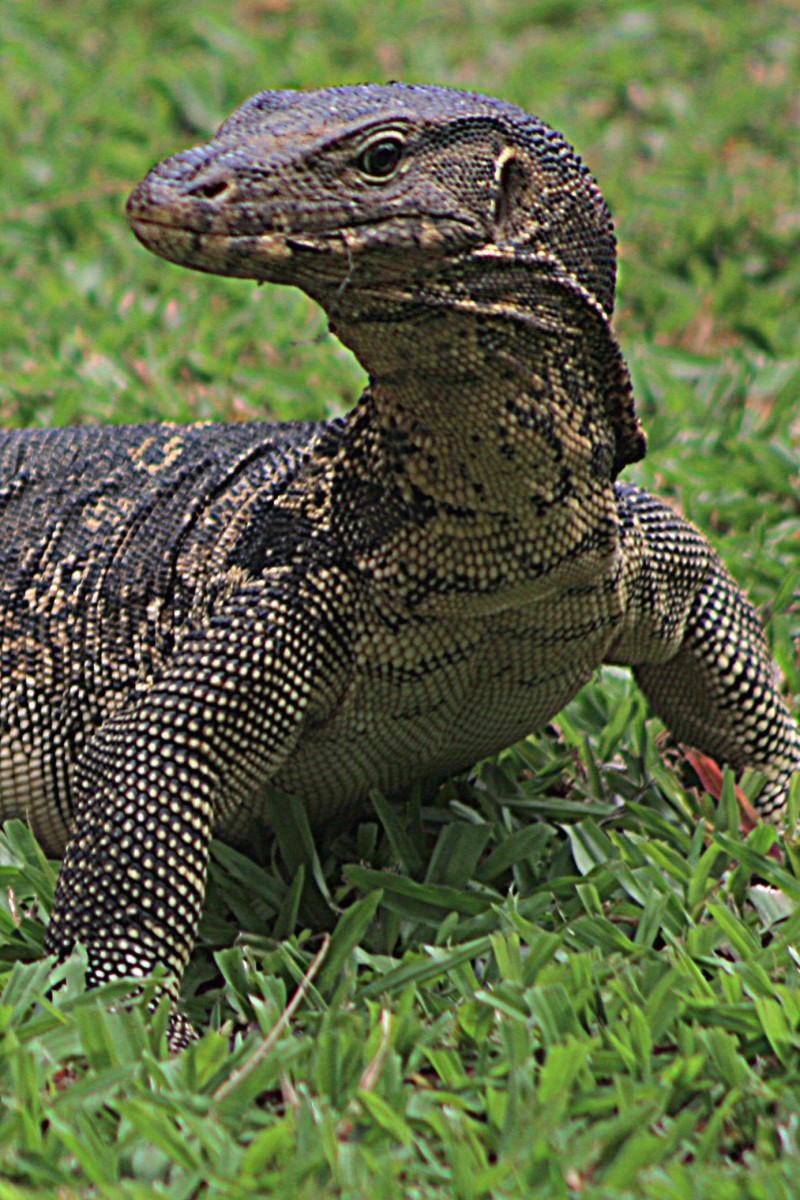

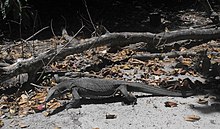




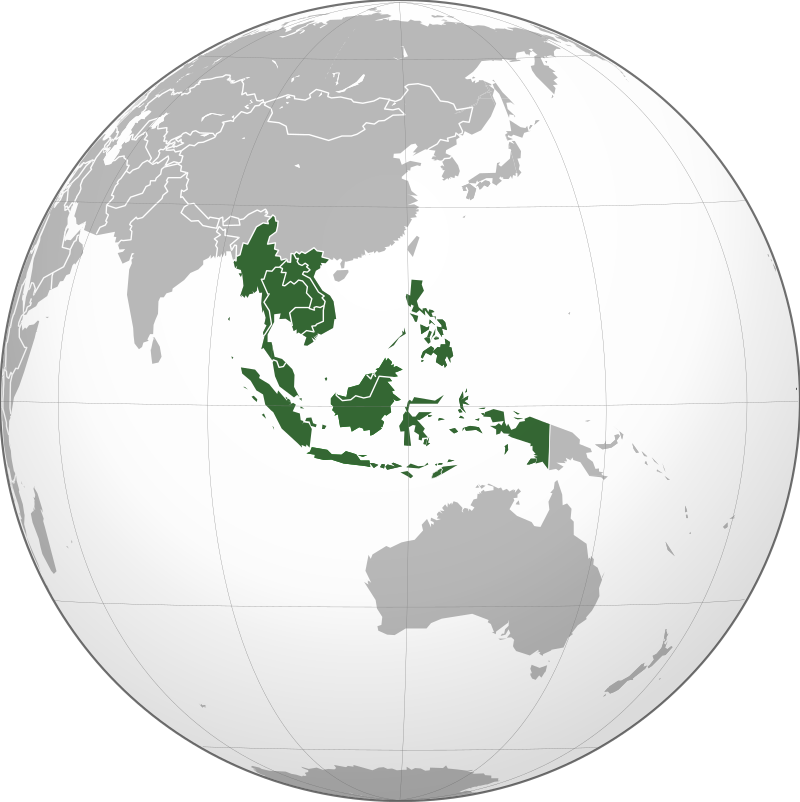
No comments:
Post a Comment
Note: Only a member of this blog may post a comment.